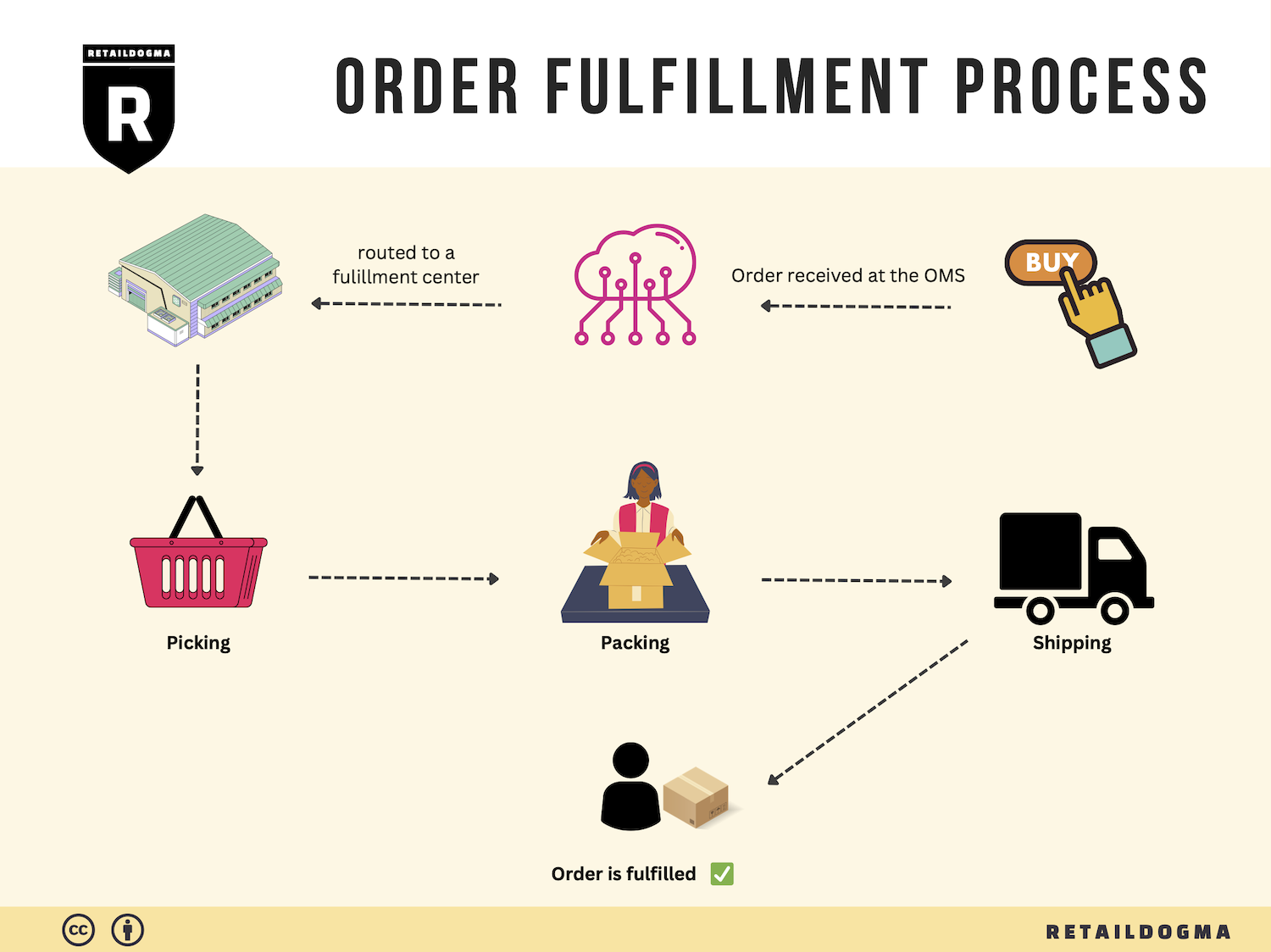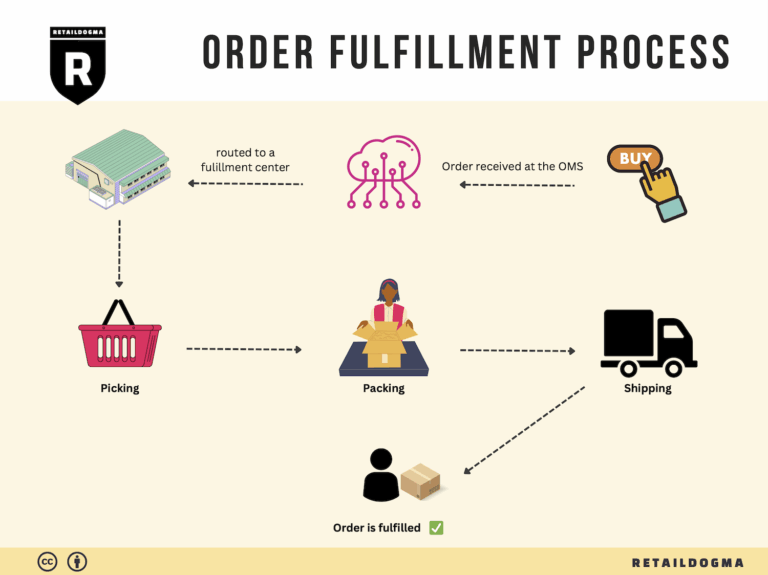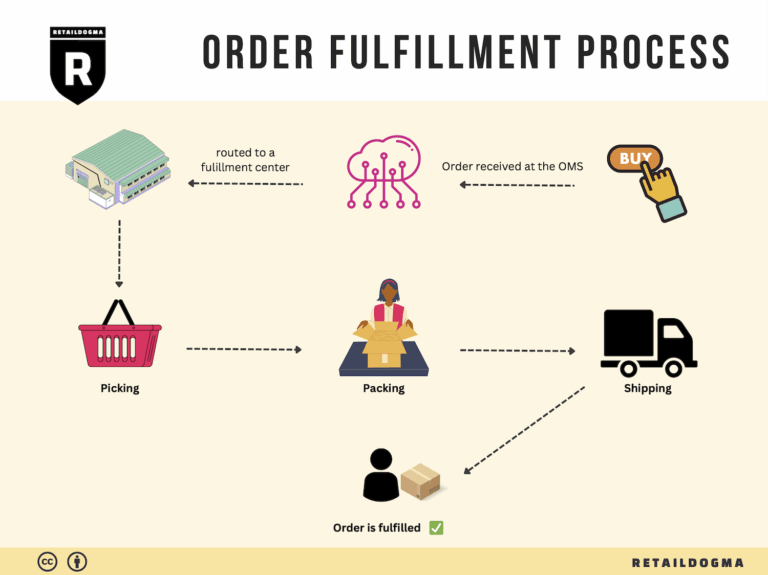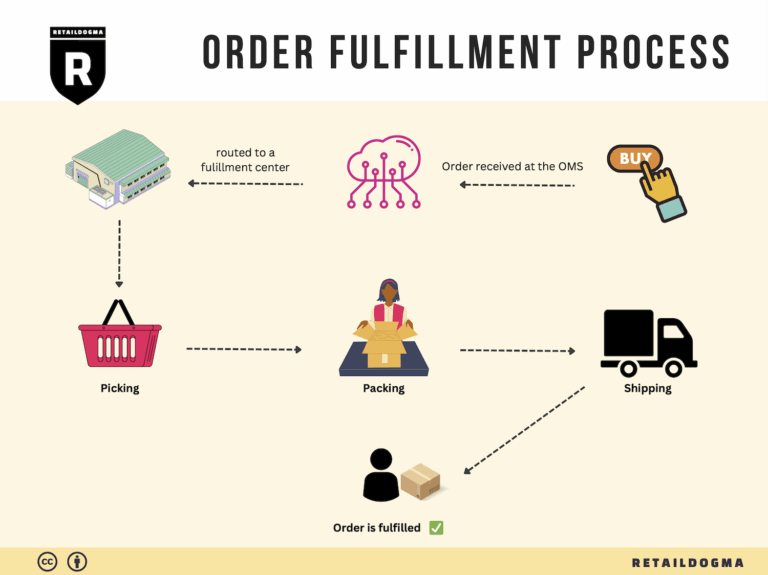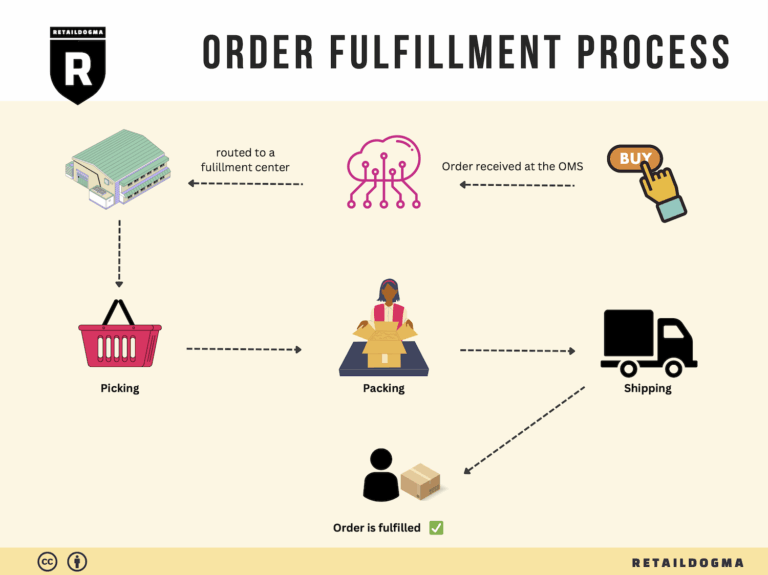How Order Fulfillment Works: A Step-by-Step Guide for Businesses
What is E-commerce Fulfillment? An Introduction for Growing Businesses
Understanding E-commerce Fulfillment: A Key to Scaling Your Business
As a growing online business, the thrill of increasing sales can quickly turn into a daunting challenge when it comes to packing and shipping orders. Many entrepreneurs find themselves overwhelmed, spending countless hours managing logistics instead of focusing on what truly matters: growing their brand. This is where e-commerce fulfillment comes into play, simplifying the process of getting products into the hands of customers.
E-commerce fulfillment is essentially the journey a product takes from your warehouse to your customer’s doorstep. It encompasses everything from receiving inventory and storing products to picking, packing, and shipping orders. Efficient fulfillment not only enhances customer satisfaction but also strengthens your brand’s reputation and drives repeat business.
In this guide, we’ll explore various fulfillment models tailored for growing businesses, including Third-Party Logistics (3PL) and Fulfillment by Amazon (FBA). Understanding the differences between these models is crucial for selecting the right approach for your operations. Each model comes with its own set of advantages, and the best choice depends on your specific needs, volume, and business goals.
We will also delve into the core services associated with e-commerce fulfillment. These services include inventory management, order processing, and shipping solutions. By understanding these components, you can better assess what your business requires to streamline operations and enhance customer experiences.
Choosing the right fulfillment partner is a pivotal decision that can significantly impact your bottom line. We will provide you with practical tips on what to look for in a fulfillment provider, including technology capabilities, scalability, and customer support. This section will help you navigate the myriad options available in the market and find a partner that aligns with your business goals.
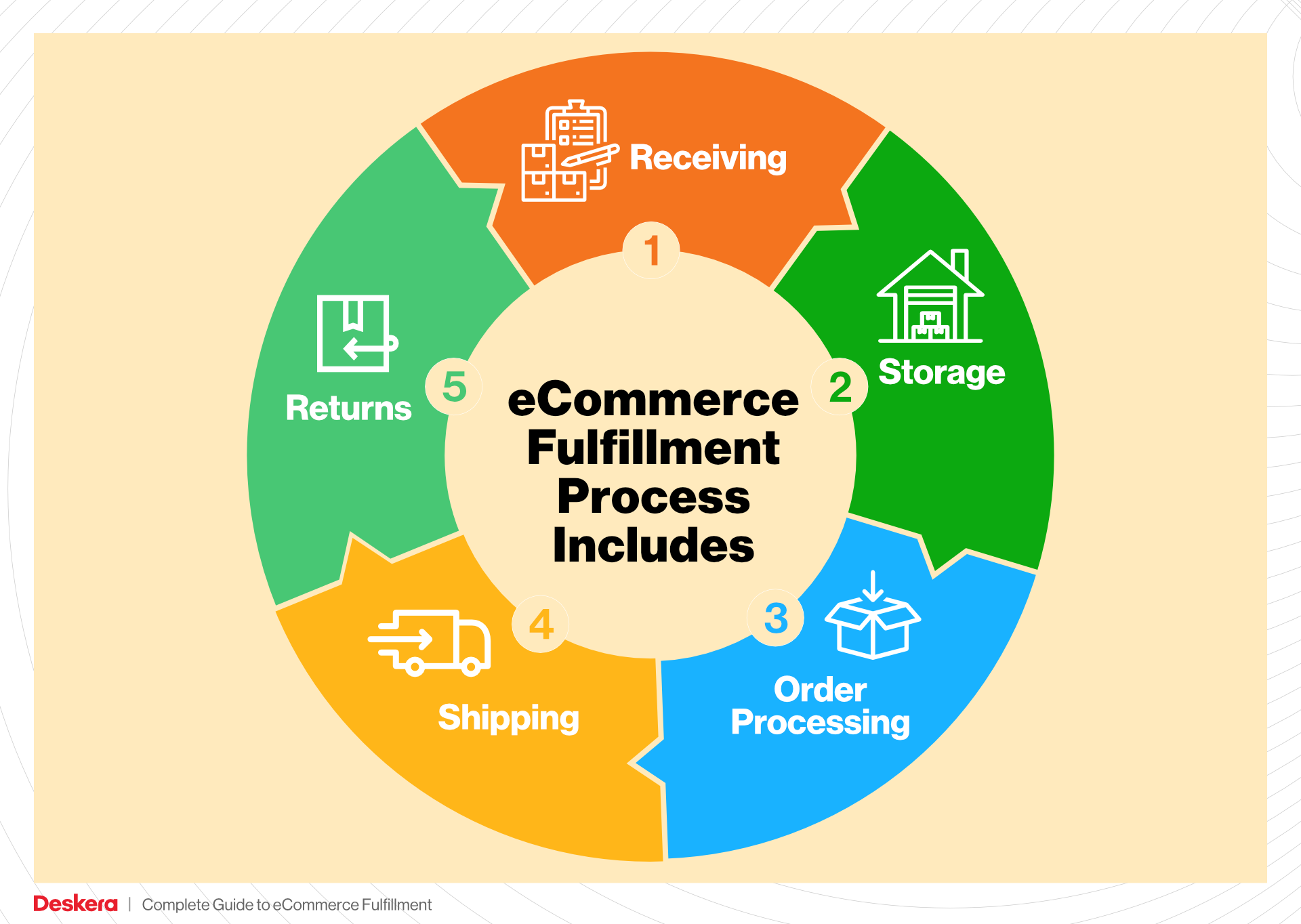
Lastly, we’ll discuss pricing structures associated with different fulfillment services, helping you understand the cost implications of each model. This knowledge is essential for budgeting and ensuring that your fulfillment strategy remains profitable.
The ultimate goal of this guide is to empower you, the business owner, to make informed decisions about your logistics. By implementing effective e-commerce fulfillment strategies, you can alleviate the stress of order management, improve customer satisfaction, and focus on scaling your business successfully.
What You’ll Learn In This Guide
- What is E-commerce Fulfillment? An Introduction for Growing Businesses
- The Order Fulfillment Process: From ‘Buy’ Button to Customer’s Door
- Comparing Fulfillment Models: In-House vs. 3PL vs. Dropshipping
- A Deep Dive into Amazon FBA: Pros, Cons, and Who It’s For
- Core Services Offered by Fulfillment Centers
- How to Choose a Fulfillment Partner: A 6-Point Checklist
- Understanding Fulfillment Pricing: A Breakdown of Common Fees
- Frequently Asked Questions (FAQs) about Fulfillment
- Conclusion: Is Outsourcing Fulfillment the Right Move for Your Business?
- Important Disclaimer
The Order Fulfillment Process: From ‘Buy’ Button to Customer’s Door
1. Receiving Inventory
The order fulfillment process begins with receiving inventory, where products arrive at the fulfillment center from suppliers or manufacturers. This step is crucial as it sets the foundation for efficient inventory management. Upon arrival, items are checked against purchase orders to ensure accuracy in quantities and specifications. This step often involves key terms such as SKU (Stock Keeping Unit), which uniquely identifies each product.
Effective receiving processes not only confirm that the right products are received but also allow for the identification of discrepancies, such as damaged goods or shortages. A well-structured receiving process helps minimize errors and lays the groundwork for smooth warehouse operations. Efficient receiving ensures that inventory is quickly entered into the system, enabling timely access for subsequent steps in the fulfillment process.
2. Warehouse Storage
Once inventory is received, it must be stored appropriately within the fulfillment center. This step involves categorizing and organizing products in a way that maximizes space and enhances picking efficiency. Advanced Warehouse Management Systems (WMS) are utilized to track inventory levels and locations, ensuring that items are stored in optimal locations based on their size, demand, and turnover rates.
Proper storage is essential for several reasons. First, it reduces the time spent locating items during order picking, which can significantly enhance overall efficiency. Second, it helps maintain product quality by ensuring that items are stored under appropriate conditions. Finally, effective storage practices can lead to reduced operational costs by minimizing the need for excess space and optimizing labor costs associated with inventory management.
3. Order Picking
Order picking is a critical phase in the fulfillment process, where items are selected from storage to fulfill customer orders. This process can involve various methods, such as single order picking, batch picking, or wave picking, depending on the order volume and warehouse layout. A key component of this step is the use of pick lists, which detail the items and quantities needed for each order.
The importance of efficient order picking cannot be overstated. Fast and accurate picking directly impacts delivery speed and customer satisfaction. When orders are picked correctly and swiftly, it not only enhances the customer experience but also reduces the likelihood of returns due to errors. Investing in training for picking staff and utilizing technology such as handheld scanners can significantly improve accuracy and speed during this phase.
4. Order Packing
After items have been picked, they move to the packing stage, where products are prepared for shipment. During this step, orders are checked for accuracy, and items are securely packaged to prevent damage during transit. This stage involves selecting appropriate packing materials, such as boxes, bubble wrap, and tape, as well as generating shipping labels.
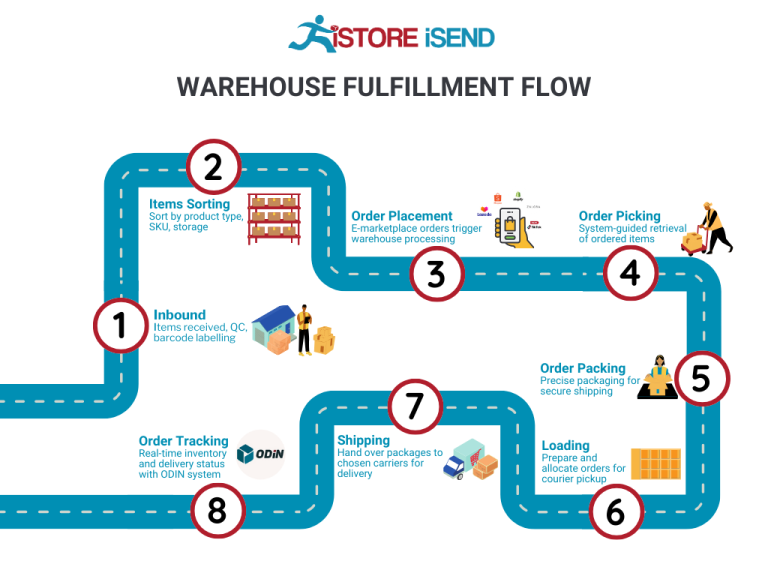
Packing is essential for protecting products and ensuring they arrive at the customer’s door in excellent condition. A well-executed packing process also contributes to operational efficiency by minimizing returns and enhancing customer satisfaction. Businesses should consider implementing packing stations equipped with necessary tools and equipment, and train staff on best practices to streamline this process.
5. Shipping & Delivery
The final step in the order fulfillment process is shipping and delivery. Once orders are packed, they are sorted based on shipping methods and destinations. This stage often involves coordination with various carriers to ensure timely delivery. Key terms associated with this step include last-mile delivery, which refers to the final leg of the shipping journey from a distribution center to the customer’s location.
Shipping is vital as it directly influences customer satisfaction and retention. In today’s e-commerce landscape, consumers expect fast and reliable shipping options. Businesses must establish strong relationships with carriers and leverage technology to track shipments in real-time. By optimizing shipping routes and utilizing fulfillment centers strategically located near key markets, businesses can significantly reduce transit times and shipping costs, enhancing the overall customer experience.
In conclusion, each step of the order fulfillment process is interconnected and plays a crucial role in delivering a seamless experience from the moment a customer clicks the ‘buy’ button to when their order arrives at their door. By focusing on efficiency, accuracy, and customer satisfaction at every stage, e-commerce businesses can successfully scale their operations and meet the growing expectations of today’s consumers.
Comparing Fulfillment Models: In-House vs. 3PL vs. Dropshipping
Fulfillment Model Comparison
| Model | Who Handles Inventory | Best For (Business Stage) | Key Advantage | Key Disadvantage |
|---|---|---|---|---|
| In-House Fulfillment | Business itself | Startups to Established | Full control over inventory and process | High overhead and operational complexity |
| Third-Party Logistics (3PL) | External logistics provider | Growth stage | Scalability and cost efficiency | Less control over operations and inventory |
| Dropshipping | Supplier or manufacturer | Startups and small firms | Low upfront investment | Lower profit margins and reliance on suppliers |
In-House Fulfillment
In-house fulfillment refers to a model where the e-commerce business manages its inventory, warehousing, and shipping processes internally. This approach allows businesses to have full control over every aspect of their operations, from inventory management to packaging and delivery. Companies choosing this model often invest in their own warehousing facilities and technology, including warehouse management systems (WMS), to streamline operations. This model is typically best suited for established businesses that have a stable order volume and can absorb the associated overhead costs. The primary advantage of in-house fulfillment is the ability to maintain strict quality control and direct oversight of the fulfillment process, which can enhance customer satisfaction. However, the downside is the significant operational complexity and financial burden it can impose, especially if order volumes fluctuate or if the business lacks the infrastructure to support scalable growth.
Third-Party Logistics (3PL)
Third-party logistics (3PL) involves outsourcing warehousing and fulfillment services to an external provider. This model has gained popularity among growing businesses as it allows them to focus on their core competencies while leveraging the expertise and infrastructure of specialized logistics companies. 3PL providers typically offer a range of services, including inventory storage, order processing, and shipping, which can be tailored to meet the specific needs of the e-commerce business. The key advantage of using a 3PL is scalability; businesses can quickly adjust their logistics capabilities in response to demand fluctuations without the need for significant capital investment. However, outsourcing fulfillment also means that businesses relinquish some control over their inventory and fulfillment processes, which can lead to challenges in communication and quality assurance. For companies looking to expand their operations efficiently, partnering with a reliable 3PL can be an effective strategy to manage logistics without overextending resources.
Dropshipping
Dropshipping is a fulfillment model where the e-commerce retailer does not keep products in stock. Instead, when a customer places an order, the retailer purchases the item from a third-party supplier who then ships it directly to the customer. This model is particularly attractive for startups and small businesses because it requires minimal upfront investment and eliminates the need for warehousing and inventory management. Retailers can offer a wide range of products without the risk of overstocking or holding unsold inventory. However, dropshipping comes with its own set of challenges. The most significant disadvantage is the lower profit margins, as retailers typically pay wholesale prices to suppliers and must compete with others who may be selling the same products. Additionally, the reliance on suppliers for inventory management and shipping can lead to issues with product quality and fulfillment speed, potentially impacting customer satisfaction. Despite these challenges, dropshipping remains a viable option for entrepreneurs looking to enter the e-commerce space with limited financial risk.
In conclusion, each fulfillment model presents unique advantages and disadvantages that must be carefully considered based on the specific needs and goals of the business. Whether opting for in-house fulfillment for greater control, leveraging a 3PL for scalability, or utilizing dropshipping for a low-risk entry into e-commerce, business owners must align their choice with their operational capabilities, financial resources, and long-term growth strategies.
A Deep Dive into Amazon FBA: Pros, Cons, and Who It’s For
Understanding Fulfillment by Amazon (FBA)
Fulfillment by Amazon (FBA) is a service offered by Amazon that allows e-commerce sellers to store their products in Amazon’s fulfillment centers. Amazon then takes care of storage, packaging, shipping, and customer service for these products. This system provides sellers with the ability to leverage Amazon’s vast logistics network, ensuring that their products reach customers quickly and efficiently.
When a customer places an order for an FBA product, Amazon handles the entire process—from picking the item from the warehouse to packing it and shipping it out. Additionally, Amazon manages customer inquiries and returns, freeing sellers from these operational burdens.
How FBA Works
-
Setting Up an FBA Account: Sellers begin by creating an Amazon seller account and enrolling in the FBA program. They can then list their products for sale on Amazon.
-
Shipping Inventory to Amazon: Sellers prepare their inventory according to Amazon’s guidelines and ship it to designated fulfillment centers. Amazon provides detailed instructions on how to package and label products.
-
Storage in Fulfillment Centers: Once Amazon receives the inventory, it is stored in their warehouses. Sellers can monitor their inventory levels through the Amazon Seller Central dashboard.
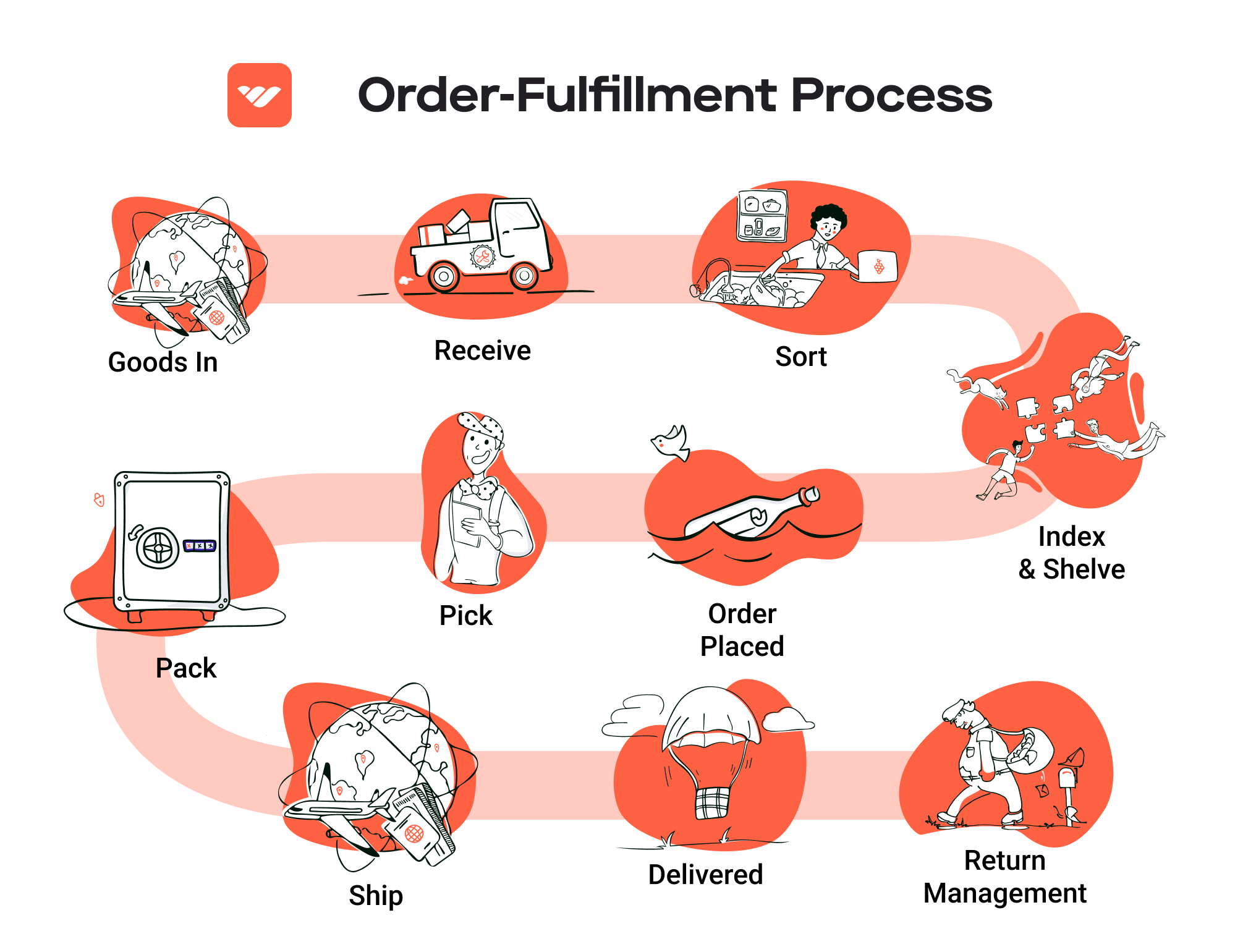
-
Order Fulfillment: When a customer orders an FBA product, Amazon picks the item from the shelf, packs it, and ships it directly to the customer. FBA products are eligible for Amazon Prime, which can significantly increase sales.
-
Customer Service and Returns: Amazon manages all customer service inquiries and handles returns for FBA items, allowing sellers to focus on other aspects of their business.
Pros of FBA
1. Prime Eligibility
FBA products are automatically eligible for Amazon Prime and other Amazon services like Free Shipping. This increases the visibility of your products and can lead to higher conversion rates, as many customers prefer Prime-eligible products for their fast shipping options.
2. Customer Trust
Amazon is a trusted brand, and many customers feel more secure purchasing items fulfilled by Amazon. This trust can lead to increased sales for sellers, as customers often prefer products that come with Amazon’s reliable shipping and customer service.
3. Multi-Channel Fulfillment
FBA isn’t limited to just Amazon sales. Sellers can use FBA to fulfill orders from their own websites or other sales channels, allowing them to streamline their logistics and offer a consistent shipping experience across platforms.
4. Simplified Logistics
By utilizing FBA, sellers can offload the complexities of warehousing, packing, and shipping. This allows them to focus on growing their business rather than managing logistics.
5. Inventory Management Tools
Amazon provides sellers with robust inventory management tools that help track sales trends, manage stock levels, and forecast demand, enabling sellers to optimize their inventory levels.
Cons of FBA
1. High Fees
FBA comes with several fees, including storage fees for the inventory stored in Amazon’s fulfillment centers and fulfillment fees for each item sold. These fees can eat into profit margins, especially for lower-priced items or for products with slow turnover rates.
2. Strict Inventory Rules
Sellers must adhere to Amazon’s strict inventory management policies, including guidelines on labeling, packaging, and product quality. Failure to comply can result in additional fees or even suspension from the FBA program.
3. Commingling Risks
FBA products are often commingled with products from other sellers, meaning that your inventory may be mixed with that of competitors. This can lead to concerns about product quality and authenticity, as sellers have less control over the final product that reaches the customer.
4. Less Control Over Shipping
While Amazon’s logistics network is efficient, sellers have limited control over how their products are stored and shipped. This can lead to challenges in managing customer expectations, especially if there are delays in shipping or issues with product returns.
5. Limited Access to Customer Data
Sellers using FBA may not have access to detailed customer data, making it difficult to analyze purchasing behavior or follow up with customers post-sale. This can hinder efforts to build customer relationships and foster brand loyalty.
Who is FBA Best For?
Fulfillment by Amazon is particularly beneficial for small to medium-sized e-commerce businesses looking to scale their operations without the burden of managing logistics. Here are some specific scenarios where FBA shines:
-
New Sellers: Entrepreneurs just starting out can take advantage of Amazon’s infrastructure to gain traction in the marketplace without needing to invest heavily in logistics.
-
Sellers with Seasonal Products: Businesses that have products with fluctuating demand, such as seasonal items, can benefit from FBA’s ability to manage inventory without incurring long-term storage costs.
-
Brands Seeking Exposure: Brands looking to enhance their visibility can leverage FBA to tap into the Prime customer base, increasing their chances of sales.
-
Multi-Channel Sellers: E-commerce businesses selling on multiple platforms can streamline their operations by using FBA for order fulfillment across all channels.
In conclusion, while FBA offers numerous advantages that can help scale an e-commerce business, it also presents challenges that must be carefully considered. Sellers should weigh the pros and cons based on their specific business model, product types, and long-term goals to determine if FBA aligns with their operational strategy.
Core Services Offered by Fulfillment Centers
Inventory Management & Warehousing
Inventory management and warehousing are foundational services provided by fulfillment centers, designed to ensure that e-commerce businesses can efficiently store, track, and manage their products. Fulfillment centers utilize advanced inventory management systems (IMS) that integrate with e-commerce platforms to provide real-time visibility into stock levels, order status, and demand forecasting.
Benefits:
-
Optimized Stock Levels: By maintaining accurate inventory counts and forecasts, fulfillment centers help businesses avoid stockouts and overstock situations. This optimization is crucial for meeting customer demand without tying up excessive capital in unsold goods.
-
Space Efficiency: Fulfillment centers are equipped to maximize space utilization, allowing businesses to store a larger variety of products in a smaller footprint. This is particularly beneficial for e-commerce retailers with fluctuating product lines or seasonal inventory.
-
Cost Savings: Outsourcing warehousing to fulfillment centers can lead to significant cost reductions. Businesses save on overhead associated with maintaining their own storage facilities, including rent, utilities, and staffing.
-
Scalability: As e-commerce businesses grow, their inventory needs can change dramatically. Fulfillment centers offer scalable solutions, allowing companies to increase or decrease their storage capacity as required, facilitating smooth transitions during peak seasons.
Pick and Pack Services
Pick and pack services are a crucial component of the fulfillment process, where individual items are selected (picked) from inventory and packaged (packed) for shipment to customers. This process is streamlined through the use of automated systems and trained staff to ensure efficiency and accuracy.
Benefits:
-
Speed and Accuracy: Fulfillment centers employ trained personnel and technology to pick and pack orders quickly and accurately. This reduces the likelihood of shipping errors, ensuring that customers receive the correct items, which is vital for maintaining customer satisfaction.
-
Custom Packaging: Many fulfillment centers offer customized packaging options, allowing businesses to enhance their branding and improve the unboxing experience for customers. This attention to detail can lead to increased customer loyalty and repeat purchases.
-
Order Processing Efficiency: By handling the entire picking and packing process, fulfillment centers enable e-commerce businesses to focus on core activities like marketing and product development. This delegation of logistics frees up valuable time and resources.
-
Scalability: Fulfillment centers can easily scale their pick and pack operations to accommodate seasonal spikes in orders, such as during holiday sales or promotional events. This flexibility helps businesses meet demand without the need for additional infrastructure investment.
Kitting and Assembly
Kitting and assembly services involve the grouping of individual items into a single package or the assembly of components into a final product. This service is especially beneficial for businesses that sell products requiring assembly or those that want to bundle items for promotional offers.
Benefits:
-
Enhanced Customer Experience: Kitting allows businesses to offer bundled products at a competitive price, enhancing the perceived value for customers. This strategy can increase sales and improve customer satisfaction by providing more comprehensive solutions.
-
Reduced Shipping Costs: By combining multiple items into a single shipment, businesses can reduce shipping costs. Kitting minimizes the number of packages sent out, which can lead to lower transportation fees and improved efficiency.
-
Time Savings: Outsourcing kitting and assembly to fulfillment centers allows businesses to save time on labor-intensive processes. This efficiency enables companies to bring products to market faster, enhancing their competitive edge.
-
Inventory Control: Kitting services help businesses manage their inventory more effectively by consolidating items into defined kits. This organization simplifies inventory tracking and reduces the likelihood of stock discrepancies.
Returns Management (Reverse Logistics)
Returns management, often referred to as reverse logistics, is the process of handling returned goods efficiently. This service is crucial for e-commerce businesses, as the ease of returning products is a significant factor influencing consumer purchasing decisions.
Benefits:
-
Streamlined Processes: Fulfillment centers manage the returns process, including inspection, restocking, and processing refunds or exchanges. This streamlining helps minimize disruptions to the overall fulfillment operation and enhances customer satisfaction.
-
Data Insights: Effective returns management provides valuable insights into customer behavior and product performance. Fulfillment centers can analyze return data to identify trends, allowing businesses to make informed decisions about product quality and inventory management.
-
Cost Reduction: By outsourcing returns management, e-commerce businesses can reduce overhead costs associated with handling returns internally. Fulfillment centers are equipped to handle returns efficiently, minimizing labor costs and improving turnaround times.
-
Improved Customer Retention: A hassle-free returns process can significantly enhance customer loyalty. Fulfillment centers ensure that returns are processed quickly and efficiently, helping to maintain a positive relationship with customers and encouraging repeat business.
In summary, fulfillment centers offer a suite of core services that are essential for e-commerce businesses looking to scale effectively. By leveraging these services—inventory management, pick and pack, kitting, and returns management—businesses can enhance their operational efficiency, improve customer satisfaction, and ultimately drive sales growth.
How to Choose a Fulfillment Partner: A 6-Point Checklist
Location & Warehouse Network
Importance:
The location of your fulfillment partner’s warehouses can significantly impact shipping costs and delivery times. A well-positioned partner can ensure that your products reach customers quickly and affordably, which is crucial in today’s fast-paced e-commerce environment.
Questions to Ask:
– Where are your fulfillment centers located, and how does this network align with our customer base?
– How do you optimize shipping routes to reduce transit times and costs?
– Can you provide insights into your average shipping times to various regions?
Technology & Integrations
Importance:
In an increasingly digital marketplace, the technology a fulfillment partner uses is vital for operational efficiency. A robust warehouse management system (WMS) can streamline inventory tracking, order processing, and shipping. Furthermore, seamless integrations with your existing e-commerce platform can enhance visibility and control over your supply chain.
Questions to Ask:
– What WMS do you use, and how does it integrate with major e-commerce platforms (like Shopify, WooCommerce, etc.)?
– Can you provide real-time tracking and reporting capabilities?
– How do you handle inventory management, and what tools do you use to forecast demand?
Specializations (e.g., Cold Storage, Oversized Items)
Importance:
If your product range includes specialized items such as perishable goods or oversized products, it’s crucial to choose a fulfillment partner that can accommodate these needs. Specialized facilities can ensure proper handling and storage, preventing spoilage and damage.
Questions to Ask:
– Do you have facilities equipped for cold storage or handling oversized items?
– What protocols do you have in place for the storage and shipping of temperature-sensitive products?
– Can you manage unique packaging requirements for specialized items?
Scalability & Capacity
Importance:
As your business grows, your fulfillment needs will likely change. A partner that can scale with you ensures that you won’t face limitations during peak seasons or rapid growth phases. This flexibility can save you from the stress of seeking new partners and help maintain customer satisfaction.
Questions to Ask:
– How do you handle peak seasons, and what capacity can you manage during those times?
– What is your process for scaling operations to meet increased demand?
– Can you provide case studies or examples of how you’ve helped other businesses scale?
Pricing and Contracts
Importance:
Understanding the pricing structure and contract terms of your fulfillment partner is essential for maintaining healthy profit margins. Transparency in costs can help you budget effectively and avoid unexpected fees that could impact your bottom line.
Questions to Ask:
– What is your pricing model (e.g., per order, per item, monthly fees)?
– Are there additional costs for services like returns processing, storage, or expedited shipping?
– What are the terms of the contract, and are there any penalties for early termination?
Customer Support & Reviews
Importance:
Reliable customer support can make a significant difference when issues arise. A partner that provides responsive and knowledgeable support can help resolve problems quickly, minimizing disruptions to your operations. Additionally, researching customer reviews can give you insight into their reputation and reliability.
Questions to Ask:
– What support channels do you offer (e.g., phone, email, live chat)?
– How do you handle issues or delays in shipping, and what is your protocol for communication during a crisis?
– Can you provide references or testimonials from current clients?
Conclusion
Choosing the right fulfillment partner is a critical decision that can significantly impact your e-commerce business’s success. By carefully evaluating potential partners based on location, technology, specialization, scalability, pricing, and customer support, you can make an informed choice that aligns with your operational needs and growth ambitions. Use this checklist as a guide to navigate discussions with potential fulfillment partners and ensure a fruitful collaboration that enhances your logistics strategy.
Understanding Fulfillment Pricing: A Breakdown of Common Fees
Initial Setup Fees
When partnering with a fulfillment center, businesses often encounter initial setup fees. These fees cover the administrative costs associated with onboarding your products into the system. Typically, they include:
- Account Setup: This includes creating your account and configuring your profile in the fulfillment center’s system.
- Product Listing: If your products need to be cataloged, this fee covers the costs of inputting item details, SKUs, and pricing into the inventory management system.
Initial setup fees can vary significantly based on the complexity of your product range and the fulfillment center’s pricing structure. Some providers may charge a flat fee, while others may base it on the number of SKUs or the volume of products being set up.
Receiving Fees
Receiving fees are charged when products arrive at the fulfillment center. These fees account for the labor and resources needed to unload, inspect, and input inventory into the system. The calculation of receiving fees typically depends on:
- Volume of Goods: Most fulfillment centers charge based on the number of pallets or cartons received. Higher volumes may attract tiered pricing.
- Inspection Requirements: If your products require special handling or quality checks upon arrival, additional charges may apply.
To minimize receiving fees, ensure that your shipments are well-organized and labeled correctly, as this can expedite the process and potentially lower costs.
Storage Fees (per pallet/bin)
Storage fees are recurring charges for keeping your inventory at the fulfillment center. These fees are calculated based on the space your products occupy, either by pallet or bin. Key factors influencing storage fees include:
- Space Utilization: Fees are usually charged per pallet or bin, so businesses should optimize their inventory layout to maximize storage efficiency.
- Duration of Storage: Some fulfillment centers may implement a tiered fee structure where longer storage durations incur higher costs. It’s essential to keep an eye on inventory turnover to avoid unnecessary fees.
Understanding seasonal demand and planning inventory accordingly can help mitigate storage costs, especially for slow-moving items.
Pick & Pack Fees (per item/order)
Pick and pack fees are charged for the labor involved in retrieving products from storage and preparing them for shipment. This fee structure can significantly impact your overall fulfillment costs and typically includes:
- Picking Fees: A fee per item picked from the warehouse. This fee can vary based on the complexity of the order (e.g., multiple items in one order may have a different rate than single-item orders).
- Packing Fees: A charge for packing materials and the time taken to package the order securely for shipment.
To optimize pick and pack costs, consider consolidating orders whenever possible and minimizing the variety of SKUs in individual shipments.
Shipping Fees
Shipping fees encompass the costs associated with transporting your products to the end customer. These fees can vary widely based on several factors:
- Shipping Method: Costs differ based on whether you choose standard, expedited, or same-day delivery options.
- Destination: Shipping fees are affected by the distance to the delivery location and the carrier used.
- Weight and Dimensions: Heavier or larger packages incur higher shipping fees due to the increased costs for carriers.
To manage shipping costs effectively, consider negotiating rates with carriers or utilizing a fulfillment center with established shipping partnerships that can offer discounted rates.
Conclusion: Tips for Getting an Accurate Quote
To ensure you receive a precise quote from a fulfillment center, consider the following strategies:
- Provide Detailed Product Information: Clearly outline your product specifications, including dimensions, weight, and any special handling requirements.
- Estimate Order Volumes: Provide forecasts for order volumes to help the fulfillment center tailor their pricing based on expected activity levels.
- Ask for Breakdown of Fees: Request a detailed breakdown of all potential fees, including any additional costs that may arise based on your unique needs.
- Negotiate Terms: Don’t hesitate to negotiate pricing and terms based on your business’s projected growth and shipping needs.
- Review Contracts Carefully: Ensure that you understand all terms and conditions, including any hidden fees or clauses that could affect pricing.
By approaching the fulfillment pricing process with thoroughness and clarity, you can make informed decisions that align with your business goals and budget.
Frequently Asked Questions (FAQs) about Fulfillment
1. What is an Amazon Fulfillment Center?
An Amazon Fulfillment Center is a specialized warehouse where Amazon stores a vast range of products from various sellers. The primary function of these centers is to manage inventory, process orders, and ensure timely delivery to customers. When a customer places an order, the fulfillment center picks, packs, and ships the product directly to the customer’s address, leveraging Amazon’s extensive logistics network.
2. How does an Amazon Fulfillment Center differ from a traditional warehouse?
The key difference lies in their functions and operations. A traditional warehouse is primarily focused on long-term storage of goods, often for extended periods, whereas an Amazon Fulfillment Center is optimized for rapid order processing and distribution. Fulfillment centers are designed to facilitate quick shipping, often utilizing advanced technology for inventory management and order fulfillment, ensuring that products are shipped as soon as possible after an order is placed.
3. What is a Third-Party Logistics Provider (3PL)?
A Third-Party Logistics Provider (3PL) is a service that allows businesses to outsource their logistics operations, including warehousing, fulfillment, and shipping. In the context of Amazon, sellers can choose to use 3PL services to store and fulfill their products, which can be a strategic way to scale operations without the need for significant investment in their own logistics infrastructure.
4. How much do fulfillment services cost at Amazon Fulfillment Centers?
Costs for fulfillment services at Amazon depend on several factors, including the size and weight of the products, storage fees, and order fulfillment fees. Generally, Amazon charges sellers a per-item fee for picking, packing, and shipping their products, along with monthly storage fees based on the volume of inventory stored. It’s advisable for sellers to consult Amazon’s pricing page for detailed fee structures that apply to their specific products.
5. What are the benefits of using Amazon Fulfillment Centers for my business?
Using Amazon Fulfillment Centers offers several advantages:
– Speedy Delivery: Access to Amazon’s logistics network can enable faster shipping options, including same-day or two-day delivery.
– Increased Trust: Products fulfilled by Amazon often gain customer trust, as shoppers are familiar with Amazon’s reliable service.
– Scalability: Businesses can scale their operations without needing to invest in their own warehousing or logistics.
– Simplified Returns Management: Amazon’s established return processes can enhance customer satisfaction and retention.
6. How can I integrate my store with Amazon Fulfillment Centers?
To integrate your store with Amazon Fulfillment Centers, you can enroll in the Fulfillment by Amazon (FBA) program. This program allows you to send your products to Amazon’s fulfillment centers, where they will handle storage, packaging, and shipping. You can manage your inventory and sales through your Amazon Seller Central account, ensuring a seamless integration between your online store and Amazon’s fulfillment services.
7. What types of products are suitable for Amazon Fulfillment Centers?
Most types of products can be fulfilled by Amazon, including consumer goods, electronics, clothing, and household items. However, there are restrictions on certain categories, such as hazardous materials or perishables. Sellers should review Amazon’s restricted products policy to ensure their items comply with fulfillment guidelines.
8. How do Amazon Fulfillment Centers handle returns?
Amazon Fulfillment Centers have a streamlined returns process designed to minimize hassle for customers. When a customer initiates a return, they can print a return label and ship the item back to Amazon. The fulfillment center will handle the rest, including inspecting the returned item, restocking it, or processing it for disposal if necessary. This efficient process can enhance customer satisfaction and encourage repeat business.
9. What technology does Amazon use in its fulfillment centers?
Amazon employs a variety of advanced technologies in its fulfillment centers, including robotics for picking and packing, automated storage and retrieval systems, and sophisticated warehouse management systems (WMS) that track inventory levels and optimize order fulfillment. These technologies help increase efficiency, reduce errors, and improve overall fulfillment speed.
10. Can I use Amazon Fulfillment Centers if I sell on multiple platforms?
Yes, you can use Amazon Fulfillment Centers even if you sell on multiple platforms. Through the FBA program, you can fulfill orders from other e-commerce platforms by using Amazon’s logistics network. This is often referred to as Multi-Channel Fulfillment (MCF), allowing you to leverage Amazon’s efficient shipping processes while selling across various online marketplaces.
Conclusion: Is Outsourcing Fulfillment the Right Move for Your Business?
Evaluating the Benefits of Outsourcing Fulfillment
In today’s competitive e-commerce landscape, outsourcing your fulfillment processes can be a game-changer for your business. By partnering with a dedicated fulfillment service, you can save valuable time that can be redirected towards strategic initiatives, such as product development and marketing. This time efficiency is particularly crucial for small to medium-sized enterprises (SMEs) that may lack the resources to manage logistics in-house.
Scalability is another significant advantage of outsourcing. As your business grows, so does the complexity of your fulfillment operations. A fulfillment partner can seamlessly accommodate fluctuations in demand, allowing you to scale your operations without the headaches of managing inventory, staffing, and warehousing. This adaptability is vital for maintaining customer satisfaction in an era where consumers expect rapid delivery times.
Additionally, leveraging the expertise of a fulfillment service can enhance your operational efficiency. These partners often employ advanced technologies and best practices, ensuring optimal inventory management and order accuracy. By tapping into their specialized knowledge, you can mitigate common pitfalls associated with logistics, such as stockouts or shipping delays.
However, the success of your outsourcing strategy hinges on choosing the right fulfillment partner. It’s essential to evaluate potential partners based on their technology, personnel expertise, and ability to meet your specific needs. A well-aligned partner can propel your business towards growth and improved customer satisfaction.
Take Action
To determine if outsourcing fulfillment is the right move for your business, conduct a thorough audit of your current shipping processes. Assess your operational bottlenecks, cost structures, and customer expectations. This evaluation will provide clarity on whether a fulfillment service could enhance your efficiency and support your growth objectives. Remember, the right partner can not only streamline your logistics but also empower you to focus on what truly matters—growing your business.
Important Disclaimer
⚠️ Important Disclaimer
The information in this guide is for educational purposes. Fulfillment services, pricing, and platform features change frequently. Always conduct your own due diligence and consult with providers directly before making business decisions.
